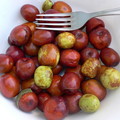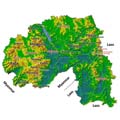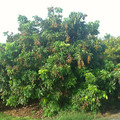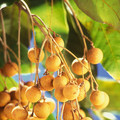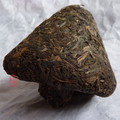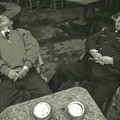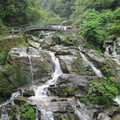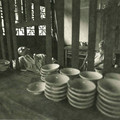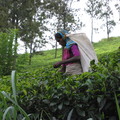Learning how to identify gu shu & make maocha - The Tea Urchin
„Mr. Gao showed us how to identify gu shu (ancient tree) tea leaves by looking at their texture, rubbing them between your fingers, and eating them raw. Old tea trees produce thicker, more leathery leaves that don’t easily come apart when you rub them. And gu shu buds should be white & shiny. When you chew them, the flavor is very bitter but there is also a strong sweet fragrance, and the juice is relatively easy to swallow. Tai di cha (terrace plantation tea) is also bitter but with a strong, lasting astringency on the sides & front of the tongue, and the juice is harder to swallow.“

Quotes Tags: Pu-erh, Gushu, Tea production, Experiencing tea
- Discussion: 0 comments
- Write a comment
Teas - Pu-erh
2012 Chawangpu Jingmai Gu Shu Xiao Bing
 1 review
1 reviewThis tea is from Jingmai Da Zhai, grown on the Da Ping Zhang area, and is considered...
Late 1990s "Jin Gua Gong Cha" 500g
 0 reviews
0 reviews"Jin Gua Gong Cha" also called "Tuan Cha", is a special kind of compressed puer tea. It...
2007 Jingmai Qiao Mu “0502”
 1 review
1 reviewUse Jingmai mountain arbor (Qiao Mu) tea which picked before Grain Rain (mid-April) as...
2005 Boyou TF 0507M Ripe Puerh Cake
 1 review
1 reviewBoyou was founded in 2005, now is one of the factories which still adhere to the...
ManZhuan 2013 - blind tasting set 5
 1 review
1 reviewsweetish, rich, dense taste is apparent from the first brewing, in the second brew the...
2015 Spring Xiao Hu Sai Old Tree Cake
 0 reviews
0 reviewsThis cake is made by friend´s shop in small quantity just 150kg in total. First spring...
Quotes - Pu-erh
„Astringency
Astringency invariably accompanies bitterness. In some Puer the astringency is more pronounced, the bitterness slightly weaker. A benefit of astringency is that it can help promote salivation. If this is felt on the underside of the the tongue it is a further mark of good tea.“
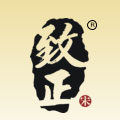
Quotes Tags: Pu-erh, Experiencing tea
Video - Pu-erh
Theme
Teas
Shu 7581 - 2002
 1 review
1 review„tailor-made” private production “Zhong Cha Gong Si” This tea was stored for the whole time in...
2006 Langhe TF Meng Hai Chitse Beeng Cha
 1 review
1 reviewThis is one of classic recipe from Langhe tea factory which is similar with 8542 from Dayi. This tea is...
Darjeeling Jungpana Wonder Delight Second
 1 review
1 reviewBeautifully prepared whole leaf tea cultivar Pb312. Very rare tea from this garden, production only 9kg.
Tea by region
We will help you with tea selection.
Do you like quality loose tea?
We will help you to find the right one for you. Be inspired by tea ratings of other tea lovers. Rating stars could help you.


Review your cup of tea.
Review the tea you are drinking and help other tea lovers to find the right cup of tea.






 Shops
Shops Share on Facebook
Share on Facebook






